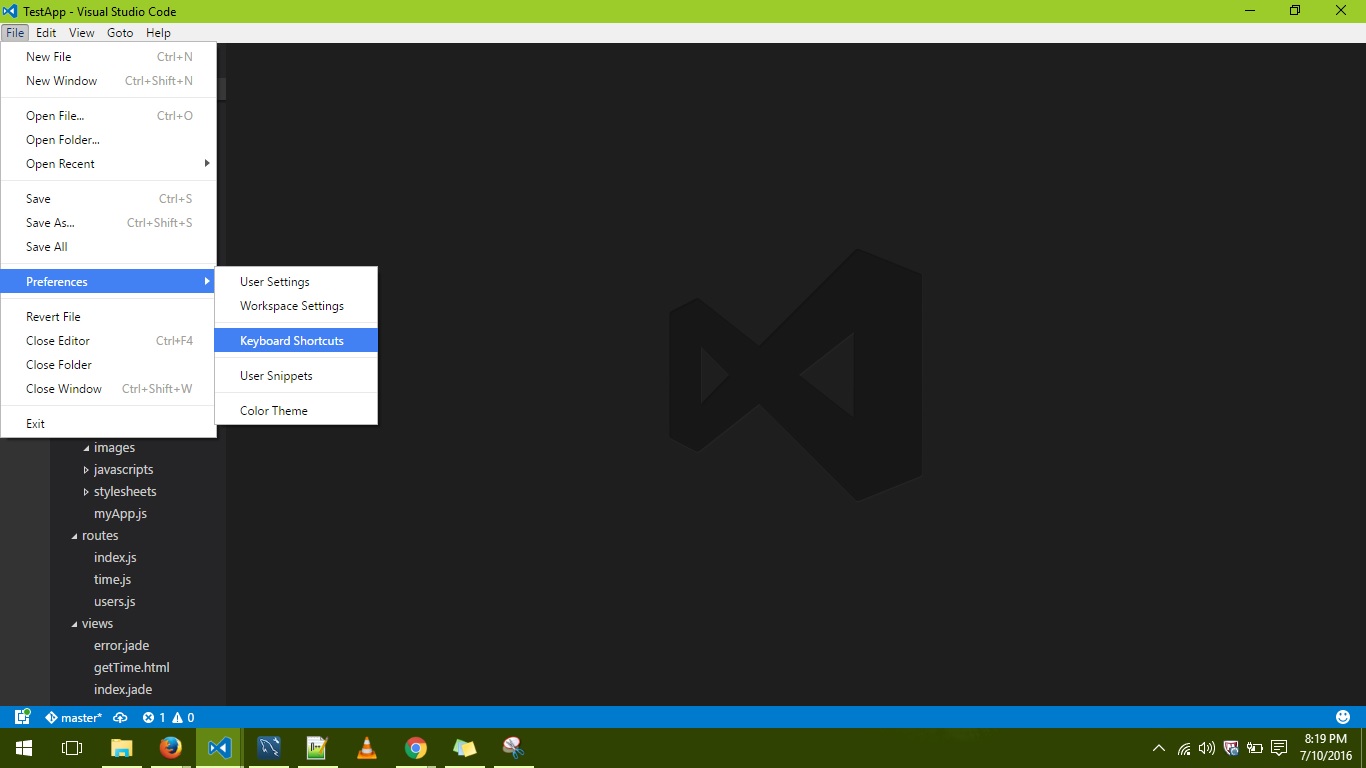


Many people (including myself) miss it entirely because it’s below the “fold” and towards the bottom of the page. The Interactive Tutorial is right on the “Welcome” page when the editor is first opened: The Interactive Playground section on the VS Code Welcome Page. Each of the examples are interactive so that you can practice the tutorials right inside the tutorials themselves. This is a special page that goes through common keyboard shortcuts and concepts like multiple cursors, split panes, and keyboard shortcuts. One of the best ways to learn the ins and outs of VS Code is by going through the Interactive Playground. Read a related article → Interactive Playground Over the months I’ve been compiling a list of my favorite tips, tricks, and extensions for VS Code that might leave you with the same reaction that I had and continue to have: “VS Code can do that?!” 😲ĭid you know that you can add “desktop app developer” to your resumé with just a little more effort? All you need to do is look over some API documentation and create your first modern desktop app. I made the official switch to VS Code, and I haven’t looked back since. Over the next few months, I began to discover things in VS Code that I found remarkable. While this article focuses primarily on features for the web as well as JavaScript developers, VS Code has integrations with Go, Python, Java, and Ruby - just to name a few. What I did not expect was that virtually anything that I needed to do in VS Code “just worked” too. VS Code is from Microsoft, so it’s entirely expected that TypeScript would just work. Someone mentioned to me that TypeScript “just works” in VS Code and I was pleasantly surprised to find that they were right. The only reason I even did so is that I was working on a TypeScript project (also quite begrudgingly) and I was tired of fighting with the editor and the compiler and all of the settings that I needed to make a TypeScript project work. These are all the best things about VS Code that nobody ever bothered to tell you.Ībout two years ago, I begrudgingly opened Visual Studio Code (VS Code) for the first time. I could see that the new file also has a physical tab in it.Why is Visual Studio Code (VS Code) so popular, and do we really need another text editor? In this article, we’ll take a look at how VS Code extends traditional text editor concepts and opens up entirely new avenues of productivity for developers. I now created a new file and typed a tab and some other characters, and saved the file.

To repeat: I know have Detect Indentation: unchecked I thought that this should settle it, but it does not. Indeed, Detect Indentation has a checkmark too, and I unchecked it. I notice that next to this settings we can find the remark: This setting is overridden based on the file contents when "Editor: Detect Indentation" is on. However, it does have the checkmark set, but my files still get a tab character. This should be exactly the option I was looking for. However I don't think that this is related to my problem, because when I choose "Commonly Used" in these User-Settings and scroll down, I indeed see a configuration item named Editor: Insert Spaces with the description Interestingly, the link to User and Workspace Settings shows a screenshot which looks different from what my Visual Studio Code shows: In the website, Settings should be available for either "User" or "Workspace" (there are two tabs of this name visible in the screenshot on that side), while in my editor, the Settings page shows only "User". I understand that Visual Studio Code (what I use) is a different text editor from Visual Studio. UPDATE, based on the answer given by harrymc : There is no item "Advanced" under the "Edit" menu.Ī (for me) logical place to find such an option would be File/Preferences/TextEditor/Formatting, but there is no tabs->space option in that section. I have an item "Preferences" under the "File" Menu, but this in turn does not have an entry called "Source Code". I don't see a menu called "Tools" (I just have File, Edit, Selection, View, Go, Run, Terminal and Help) Preferences -> Source Code -> Code Formatting

Tools->Options->Text Editor->All Languages->Tabs I found some discussion on this topic, and the suggestions I found included to use one of: I am using Visual Studio 1.56.0 (user setup) and would like to configure an editor to input the appropriate number of spaces when I press the tab key, instead of inserting a physical tab character. It's weird that Google did not bring up an answer to this question:


 0 kommentar(er)
0 kommentar(er)
